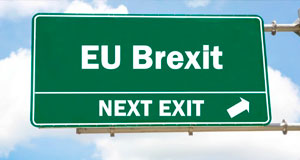 US markets managed to close modestly higher yesterday, though some of the gains were constrained by a slightly more hawkish interpretation of the latest Fed minutes to what many in the markets had been expecting. European markets also closed higher after ECB President Mario Draghi insisted that the ECB was prepared to use all instruments available to support the Eurozone economy.
US markets managed to close modestly higher yesterday, though some of the gains were constrained by a slightly more hawkish interpretation of the latest Fed minutes to what many in the markets had been expecting. European markets also closed higher after ECB President Mario Draghi insisted that the ECB was prepared to use all instruments available to support the Eurozone economy.
Last nights Fed minutes appeared to offer up more questions than answers when they were released yesterday. Expectations of a dovish set of minutes were shown to be somewhat wide of the mark as several policymakers kept the door open to possibly raising rates later in the year, if the economy were to evolve in line with their expectations.
While this was a minority view with most participants expecting rates to remain unchanged for the rest of the year, they certainly didn’t chime with the narrative markets took away from the dovish volte face that we saw in the aftermath of the March decision to keep rates on hold.
With the Fed trimming its growth forecast last month, there was no indication that US policymakers are concerned about anything other than a temporary soft patch, though they were careful to give themselves optionality in either direction when it came to future policy moves. This would suggest that Fed officials, despite the abrupt change in tone with respect to forward guidance, aren’t especially concerned about a significant slowdown in US growth prospects.
This certainly isn’t true of the European Central Bank, which left rates on hold and where ECB President Mario Draghi persisted with the fiction that rates would remain at current levels at least until through the end of 2019, while insisting that the ECB was ready to use “all instruments” at its disposal if the economy were to deteriorate further. The reality is that rates are likely to remain on hold well beyond 2019, and it wouldn’t hurt the ECB to acknowledge that reality, given that markets are already largely pricing that in.
There appeared to be no discussion around the merits, or otherwise of trying to mitigate the effects of negative rates, along with little discussion of how the upcoming TLTRO program would be structured, ahead of its scheduled start in September.
Given the nature of the weakness in recent economic data this seems extraordinarily complacent, especially in light of Draghi’s admission that economic risks remain tilted to the downside.
Last night’s EU Council meeting saw EU leaders push out the UK’s exit date until Halloween, the 31st October, which is much longer than the UK was looking for, but also shorter than most EU leaders were proposing. The fly in the ointment so to speak was France and French President Emmanuel Macron, who pushed back on the rest of EU leaders, by insisting that an extension until June was sufficient.
In a concession to the French, a review of progress in June was agreed to establish how much progress was being made, but in a sign that France was tiring of the melodrama surrounding the Brexit talks it was being reported that French President Macron wanted a UK departure before the European elections on the 22nd May, come what may.
In any case the resulting delay also means that the UK will probably have to take part on European elections in May, with the June deadline also being used by the EU to establish whether progress towards a deal is being made.
There was some talk that the EU might impose a number of conditions on any extension with French President Emmanuel Macron seeming to be the main protagonist behind the idea, though this doesn’t appear to have happened.
While an understandable precaution, it remains highly questionable as to whether this would be legal under EU law, given that the UK would still be a fully paid up member of the European Union.
In any case Prime Minister May will now have to return to the UK and make the case to her disgruntled Brexiter MPs later today that the UK will now not leave on April 12th and will be in the EU for another six months. This is not likely to go down well, which could well increase internal party manoeuvres to replace her.
EURUSD – still have solid support at the 1.1180 area, with a break targeting the 1.1000 level. The current rebound could well see a run up to the 1 1340 area and 50-day MA. Upside likely to remain limited to the 200-day MA at 1.1460 if we move above the 50-day MA.
GBPUSD – the 200-day MA and 1.2960 area continues to act as solid support. Unlikely to move much beyond the 1.3170 area until we get a clearer political picture. Below 1.2960 opens up the 1.2800 area.
EURGBP – needs to push above the 0.8650 area to argue for a move towards the 0.8720 level. While below here the bias remains for a move back to the recent lows at 0.8500.
USDJPY – has continued to drift lower falling below the 111.20 level and potentially opening up further losses towards the 110.20 area, with interim support at the 110.70 level. We need to move back above 111.30 to argue for a return to last week’s peaks.
______________
Other Forex Forecasts













